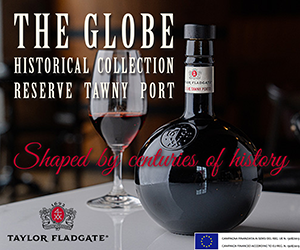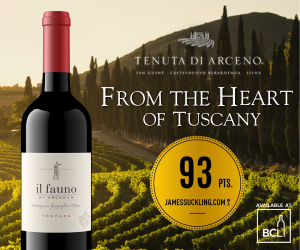Friday, January 31, 2003 Studious wine drinkers will be familiar with the link between American zinfandel and Italian primitivo, but do they know it's Croatian?

Friday, January 31, 2003
Studious wine drinkers will be familiar with the link between American zinfandel and Italian primitivo, but do they know it's Croatian?
In 2001, Dr. Carole Meredith, a professor at the University of California at Davis, announced that DNA analysis revealed the early ripening primitivo grape (which takes its name from the Latin word primitivus, meaning precocious) was identical to California zinfandel, a grape whose origins had long been a mystery to researchers.
A few years earlier, Meredith explored the Dalmatian Coast of Croatia along with two researchers from the University of Zagreb to gather information about ancient wine grapes. In the fall of 2001, their efforts paid off when they discovered the tongue-twisting crljenak kasteljanski vine. It proved to have DNA identical to that of zinfandel.
Despite matching DNA, Italian primitivo, Croatian crljenak kasteljanski and California zinfandel share very little after they are fermented -- the wines range from rustic to fruity to delicate to powerful. Each grape tells a very different story depending where it's grown, which appears to support more of the "somewhereness" theory of terroir, instead of finding similarities among clones of the same grape.
Today, a look at one-third of this DNA mystery -- wine made from a majority of primitivo (if not entirely from the southern Italian grape), which has found a home in Apulia, where the first evidence of man's presence goes back to 3000 BC.
According to Italian wine authority Neil Empson, an New Zealander who has spent nearly three decades searching out Italy's best little-known wines:
"Apulia [or Puglia, as it is known in Italian] is easy to fall in love with. From its old, head-trained vineyards to a long history of grape-growing in harmony with nature, there is everything necessary to produce top-quality wine.
"Puglia's unique alluvial soil -- deep red and sienna-coloured, and beautiful to look at -- is ideal for this structured, extract-packed, indigenous variety. After so many years of technical winemaking, I had almost forgotten that the right way to make wine is with love. In fact, Puglia reminds us this is the way to do everything."
Tasting for today's column was not only fun, but also proved that you don't have to spend a great deal of money to drink interesting wine. Here are my notes:
The Trentacinquesimo Parallelo Primitivo Del Salento 2001 has a distinctive spicy raspberry aroma and flavour. The fruit is flecked with peppery, gamy highlights before its dry Italian finish kicks in. All it needs is a hamburger to round out the edges. This good-value red tastes like a zinfandel-grenache cross.
The Calatrasi "Terrale" Primitivo 2000 has a similar spicy nose, this time mixed with aromas of sausage meat, cherries and prune/plum. It's slightly richer on the mid-palate, with more blackberry, spicy cedar, smoky sausage and pepper flavours. The finish is big and rustic, but with plenty of soft tannins. Should be perfect with grilled meat entrees.
The Corte Federico Salento Rosso 1998 has the now-familiar gamy, sweaty nose with earth and licorice undercurrents. The textures are round; the flavours spicy, meaty and peppery. It's more an old-style wine, but soft, and will be fine with rustic meat dishes.
The Farnese Primitivo 2000 was a pleasant surprise, and so much better than the generic Farnese red that sells like hotcakes in B.C. Look for a very peppery, earthy, intense black cherry and licorice nose. This is a soft, round, easy-sipping red with big prune/plum and cherry flavours. The finish is more of the same, streaked with licorice and spice. It's fresh, simple, likable and fair value.
A Mano Primitivo 2001 comes from Taranto, Apulia, and unlike old-style primitivo, this Neil Empson selection has none of the volatile cooked flavours of the south. Look for ripe cherry jam fruit with spicy clove undertones that lead you to briefly think it could be a pinot noir. Beginners will be attracted to its round, supple entry, while old hands will enjoy the bright fruit and firm, full-flavoured toasted note in the finish. It's dry, fruity, refreshing and affordable -- already a contender for barbecue red wine of the year.
Tormaresca 2000 is produced with the considerable resources of the legendary Tuscan-based Antinori family, investors in the Puglia region since mid-1998. The Tormaresca estate comprises two properties: 100 hectares in the Castel del Monte DOC region, 40 miles from the Adriatic, and 500 hectares near San Pietro Vernotico, closer to the sea in the Salento DOC region.
Tormaresca, the wine, has an open, warm, inviting black licorice and menthol nose, and it is super soft on entry with more licorice mixed with peppery raspberry fruit. There's a dusting of dry tannins in the finish. Pork dishes would work well with this. It's a New World style from Old Italy, and it works. Good value.
Wine: Trentacinquesimo Parallelo Primitivo Del Salento 2001
Price: $9.95
UPC: 8005415038701
Score: 14/20
Comments: Fun red; dirt cheap.
Wine: Calatrasi "Terrale" Primitivo 2000
Price: $15.99
UPC: 8001004000517
Score: 15/20
Comments: Blackberries and cedar scent this smoky red.
Wine: Corte Federico Salento Rosso 1998
Price: $11.99
UPC: 8011510002158
Score: 13.5/20
Comments: Soft, gamy, old-style red.
Wine: Farnese Primitivo 2000
Price: $11.95
UPC: 8019873924100
Score: 14/20
Comments: Fresh, simple, likable sipper.
Wine: A Mano Primitivo 2001
Price: $15.95
UPC: 8026705101103
Score: 15.5/20
Comments: Candidate for barbecue red of the year.
Wine: Tormaresca 2000
Price: $11.95
UPC: 8026530000039
Score: 14/20
Comments: New World style from Old World Italy.

 quicksearch
quicksearch





